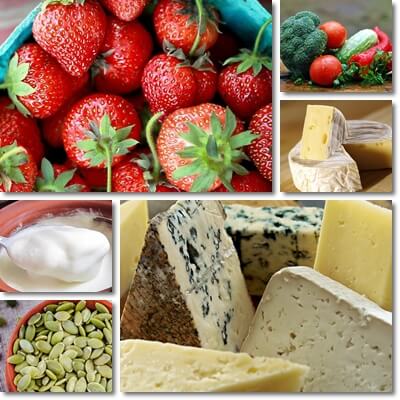Good gut health is synonymous with good general health. If you want to be healthy and feel good, you have to learn what foods to eat and what foods to avoid for good gut health.
A good diet, centered around foods that feed and sustain healthy gut flora populations can successfully prevent imbalances and help recover good gut flora populations lost as a result of malnutrition, poor eating choices, antibiotics use, disease or other factors that have a direct and meaningful impact on gut flora diversity and numbers.
A good diet can also drive positive changes in the composition of your gut flora and associated benefits for multiple aspects of health.
What is gut flora?
The word ‘flora’ means ‘flower’ and it is used to refer to plants and plant life in general or belonging to a specific place or time. With regards to the human gastrointestinal system, ‘gut flora’ refers to the microorganisms inhabiting the human gastrointestinal system. Other names include ‘gut microbiota’ or more simply, ‘gut bacteria’, indicating that gut flora consists predominantly of bacteria and that there are numerous different strains.

What does gut flora do?
The main functions of gut flora are food digestion, absorption of essential macro and micro-nutrients from food (carbohydrates, fats, protein, vitamins, dietary minerals, antioxidants), and energy production. But gut flora does more than that. Less known but equally important functions include immune system modulation, inhibition of pathogenic or disease-causing microorganisms, production of essential micro-nutrients (all B vitamins, including vitamins B1, B2, B3, B5, B6, B9, vitamin B12, biotin or vitamin B7, B8 or H and vitamin K2), synthesis of amino acids and neurotransmitters for the brain, optimization and regulation of nutrient and neurotransmitter uptake and weight management.
What does gut flora consist of?
There more diverse your diet, the greater the diversity of your gut flora. Generally, the human gastrointestinal system is populated by Bacteroides, Bifidobacterium, Enterobacteriaceae, Lactobacillus, Peptostreptococcus, Staphylococcus, Streptococcus etc., various yeasts and, to a lesser extent, also beneficial bacteria-eating viruses, or bacteriophages.
Here are some examples of good gut bacteria and some of their functions: Lactobacillus fermentum (makes vitamin B2), Lactobacillus plantarum (makes folate, or vitamin B9), beneficial Escherichia coli strains (that make vitamin K2), Lactobacillus reuteri (produces vitamin B12) and more.
Some of the good bacteria and other microorganisms that are normally part of the human stomach and intestinal flora can become pathogens and cause disease in certain instances. For example, Staphylococcus aureus can cause food-borne illnesses such as gastroenteritis. Find out more about what gut bacteria does.

What is the best diet for gut health?
The best diet for a healthy gut is a varied diet, balanced in the sense that it covers all food groups, but focused on plant-based foods, and consisting of unprocessed foods, meaning basic foods or foods as close to their natural state as possible (think fresh fruits, dried fruits, nuts, seeds, vegetables, especially legumes, cereal grains, milk, dairy, eggs, meats).
To boost good gut flora populations, include naturally fermented, soured, acidified, pickled, matured or aged foods into your diet, but in small amounts, to avoid potential gastrointestinal discomfort (gas, bloating, acid reflux, indigestion etc.). Remember, good gut health and a rich, beneficial gut flora are built slowly, over time, by eating right, clean and natural.
See below is a comprehensive list of the foods that feed healthy gut bacteria and other gastrointestinal flora and build diversity, helping achieve an exemplary gut microbiome that favors good general health:
Unprocessed foods
Unprocessed foods are foods that are as close to their natural form as possible – basic foods such as fresh fruits, dried fruits, vegetables, nuts, seeds, whole grains, milk and dairy, eggs and meat. Most natural, unprocessed or minimally processed plant foods make excellent prebiotics.
Dietary fiber
When it comes to dietary fiber, it’s best to get it from natural food sources: fruits that have an edible rind/skin and can be eaten with their rind/skin, whole grains, vegetables, especially legumes such as beans, chickpeas and peas, nuts, seeds. Dietary fiber is food for good gut bacteria in general as it actively nourishes existing populations which means that all food items that are sources of fiber are also prebiotics to a certain extent.
Fermented, acidic, soured dairy
Plain yogurt (sour yogurt or soured yogurt or Greek yogurt), soured milk, buttermilk, kefir, acidified milk and other variations are great probiotics, actively contributing to good gut bacteria populations. Products may be naturally fermented or special bacterial or yeast cultures may be added to fresh or pasteurized milk products. Look for products that have no additives and no added sugars.
Aged cheeses, smear-ripened cheeses and soft-ripened cheeses
These types of cheese make good foods to eat for gut health and are excellent probiotics and prebiotics. Anything from Gorgonzola, Stilton, Roquefort to Danish blue to Munster, Brie, Camembert and more contribute to gastrointestinal flora diversity and feed existing populations for a healthy gut environment and, by extension, excellent bowel health.
Naturally fermented fruits and vegetables or pickled fruits and vegetables
Pickled cabbage or sauerkraut, kimchi (spicy pickled vegetable and seafood mix with cabbage, radish, chili peppers, ginger, garlic, anchovies etc.), pickled cucumbers, cauliflower, carrots, unripe green tomatoes, radishes, beets, onions, artichoke, watermelon, green fruits, natto, tempeh, tofu etc. These act as both prebiotics, essentially food for gut bacteria and other microorganisms, and probiotics, providing beneficial microorganisms themselves.
Observations on diet and gut health
Indulging in fermented, pickled, soured, acidified and aged food items all of a sudden does not build a good gut flora overnight. It doesn’t work that way.
It can take weeks, months or even years to actively change and diversify your gut flora composition and sustain the acquired biodiversity in order to enjoy measurable benefits for health.
While more recent research suggests diet can produce measurable changes in gut flora within days, the changes occurring in gut flora biodiversity over such as short amount of time are likely minor, not to mention the newly acquired ecosystem is fragile and requires forming new dietary habits to ensure continuity.
It will likely take some time for an undiversified gut environment to build diversity and dietary discipline to sustain said diversity. Not just this, but changes in gut flora will vary from person to person according to what and how much they eat, environmental factors and predisposition.
This is why even the best prebiotic and probiotic food items need to be introduced into your diet gradually and in small amounts, to allow for the development of specific bacterial populations and sustain their gradually growing numbers.
Just as important, know that one food, be it garlic, vinegar, sauerkraut, kimchi, kefir or any other fermented food, or a digestive enzyme or probiotic supplement, is just one food item and has limited effects – it will not compensate for the rest of your diet. The aim should be to have a clean diet with little to no processed foods and enjoy variety in your eating, including a whole range of fermented food items, consumed reasonably of course.
Symptoms of bad gut bacteria
- A gut flora imbalance, meaning a lack of balance in the distribution of the different types of gut microorganisms, can be a source of diverse side effects. Signs and symptoms of bad gut bacteria may include:
- More frequent, lengthy and severe digestive tract infections (gastroenteritis)
- More difficulty and lengthy recovery after gastrointestinal infections
- Higher risks for complications following gastrointestinal infections
- Inflammatory responses, potentially favoring the onset of conditions such as gastritis, peptic ulcers, Crohn’s disease, Irritable Bowel Syndrome (IBS), instances of food intolerance or sensitivity, food allergies, IBS, chronic idiopathic constipation, obesity, asthma, depression, anxiety etc.
For example, Faecalibacterium prausnitzii, one of the most common commensal bacteria in the human gut, exerts a strong anti-inflammatory function. An imbalance causing low populations of the bacterium is suspected to represent a risk factor for Crohn’s disease (studies have revealed low populations of the bacterium in Crohn’s disease sufferers).
- Sensitivity or intolerance to certain foods or food groups (more likely foods that are absent or poorly represented in one’s diet).
Symptoms may include difficulty digesting different classes of foods, too much air resulting in gas, bloating, burping, flatulence, stools that are too loose or too hard, bowel movement irregularity, malaise or a general feeling of unwell etc.
Also see the article about constipation and feeling unwell.
- Poor nutrient absorption from food favoring or contributing to existing nutritional deficiencies.
- Poor mood and mental health as a result of an altered gut microbiota that fails to properly regulate the synthesis and uptake of neurotransmitters for the brain and nervous system, and the production and absorption of essential vitamins. Studies have shown imbalances in gut bacteria populations to directly impact mental health and favor the onset of depression disorder.
